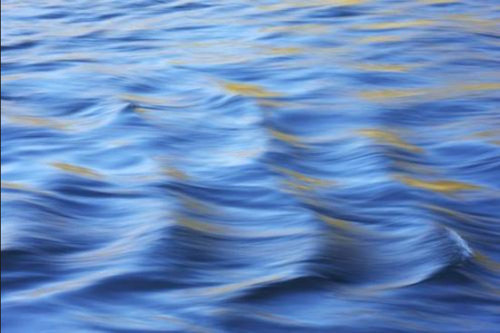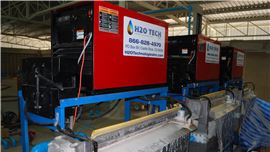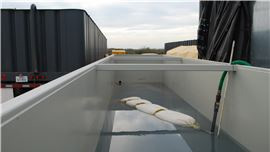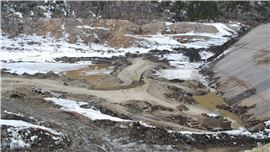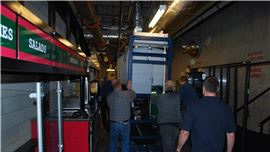Thailand
Marine process shells the crab and shrimp to make glucosamine. This process creates very contaminated water and needs to be treated before it can be disposed of. H20 Processing permanently installed a 200 gallon per minute system which includes reverse osmosis and dialysis. Through H20 Processing system protein was captured from its initial flock in the system. Protein is dried and reused in dog food as an additive.
- Water is reusable so there is little or no disposal
- Dialysis takes the brine water from the RO portion of H20 Processing treatment and creates two new products; a caustic and acid which are both reused in Marine’s operations
- H20 Processing system turned Marine’s waster water problem into reusable products with little or no discharge, saving the company hundreds of thousands of dollars each year.
Persall Texas
H20 Processing was invited to do a demonstration to treat “flow back” water from the completion of an oil well in Persall, TX. H20 Processing used their 53′ mobile core equipment trailer which included carbon filtration and RO (reverse osmosis) to complete the process. The oily water was taken from frac tanks on site and processed through the H20 Processing patented electro coagulation equipment. The process separated the oil from the water and decanted it into a tank. The water then was sent to a clarifier where the “sludge settled out” and was sent to filter bags. The treated water was sent to a carbon filter and then pumped into the RO unit where the “clean water” was then sent to frack tanks. The process treated 1500 barrels of oily water. The original water composition contained approximately 50,000 TDS. The clean water contained less than 200 ppm
- 40 miles south of San Antonio, TX
- Provided a one month test for a private oil well that supplied flow back water
- 36,000 gallons of water treated (aprox. 875 barrels)
- Combined the H20 Processing proprietary technologies and reverse osmosis. Water was 50,000 TDS before treatment, after treatment the water was 120 TDS
Homestake Dam
This project was a renewal project for the Cities of Colorado Springs and Aurora, Colorado.to resurface the inside of the dam. This consisted of the removal of several inches of asphalt using a milling process which produced asphalt filings that fell to the bottom of the dam into a coffer dam. The milling process required a large amount of water to wash the millings down and to cool the milling machines. H20 Processing designed a system which was placed approximately 200 feet above the coffer dam which was half way up the dam. Water was pumped from the coffer dam to the H20 Processing site where the water was processed to remove all hydro carbons and contamenents to discharge specifications required by the Colorado Department of Health and Environment. The permit required the water to be treated to a discharge quality to be discharged into the inlet stream to the dam. The treated water was returned to the top of the dam to be used for the milling process.
- 20 Miles from Leadville, CO
- Operations were from May 2012 – August 2012
- Over 6,000,000 gallons of water treated in 60 days.
- Water was treated to meet State regulations and returned back to reservoir.
Colorado Convention Center
H20 Processing pumps the contaminated water out of the Convention Center’s holding tanks, treats it on site, and shoots the clean water into holding containers. Once the treated water in the containers reach a certain level a pump is activated to send the water in to the sewer system. H20 Processing was and is tested on the treated water and has met or exceeded all the requirements to return the water to the sewer system.
- Located in Downtown Denver, CO
- Installed October 2012
- System is currently running
- A permanent 3 – 5 gallon per minute system was installed to help treat an underground water, seepage problem that was stopping them from properly discharging the contained water back to the sewer outlets. The water contained too high of contaminates as well as hydrocarbons.

